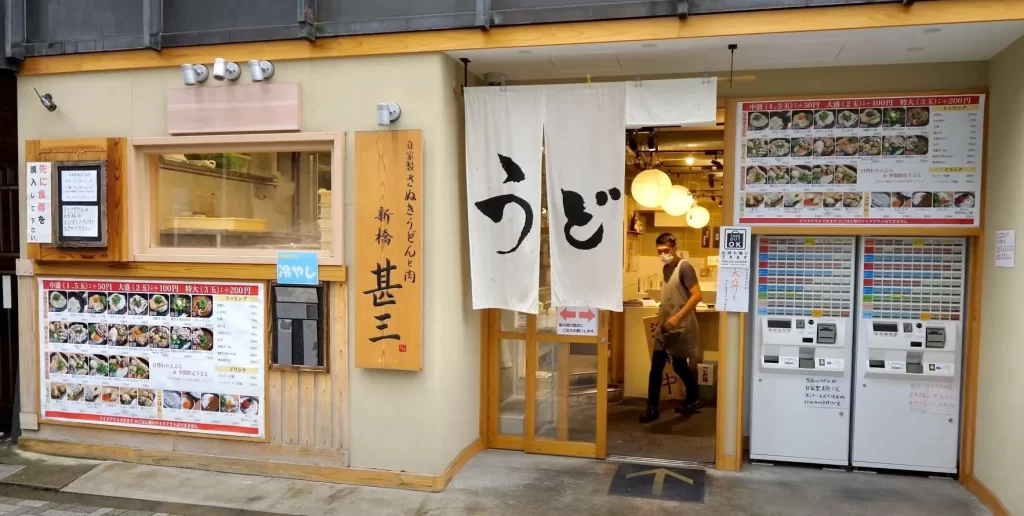Food culture Japan has to be a brand in it own right.
The Japanese have carved out a history and clear identity on how food are prepared, presented and consumed.
Food culture Japan is at a whole different level. There are no other region, country, culture or cuisine that comes close. A bold statement until you experience it time and time again.
Cuisines do vary across the World and some have become international staples outside their country of origin. The most prominent are pasta and pizza from Italy. So why is Japan’s food culture different to others?
I suspect we tend to treat food as something essential with taste as a driving factor. The next consideration is price. We don’t seem to notice anything else in between.
When Japanese, Thai and other cuisines from around the World became more popular outside their own country, we just went for taste and price. There was also initial novelty for trying something new and a change from our normal cuisine.

The day the penny dropped.
One day it dawned on me that Japanese eateries and restaurants had food preparation and kitchen areas in plain sight of the customer. You could see the dishes that you and others ordered being prepared. I began to pay attention.
I have spoken to Japanese acquaintances for the reason behind it. The general response was along the lines of tradition and custom. But little else.
The journey to understand begins
I began reading up and watching YouTube videos on the subject. And it was fascinating. The entire process from from start to finish is clearly a custom bound ritual.
Culture in every sense of the word. It applied universally across establishments big and small. Like everything else in life, there are exceptions.
It begins with sourcing of produce and ingredients with time of the year or seasonality considered. There is the use of appropriate kitchen equipment and utensils, the methods of food preparation, followed by presentation to consumption. The details for every step are fascinating.
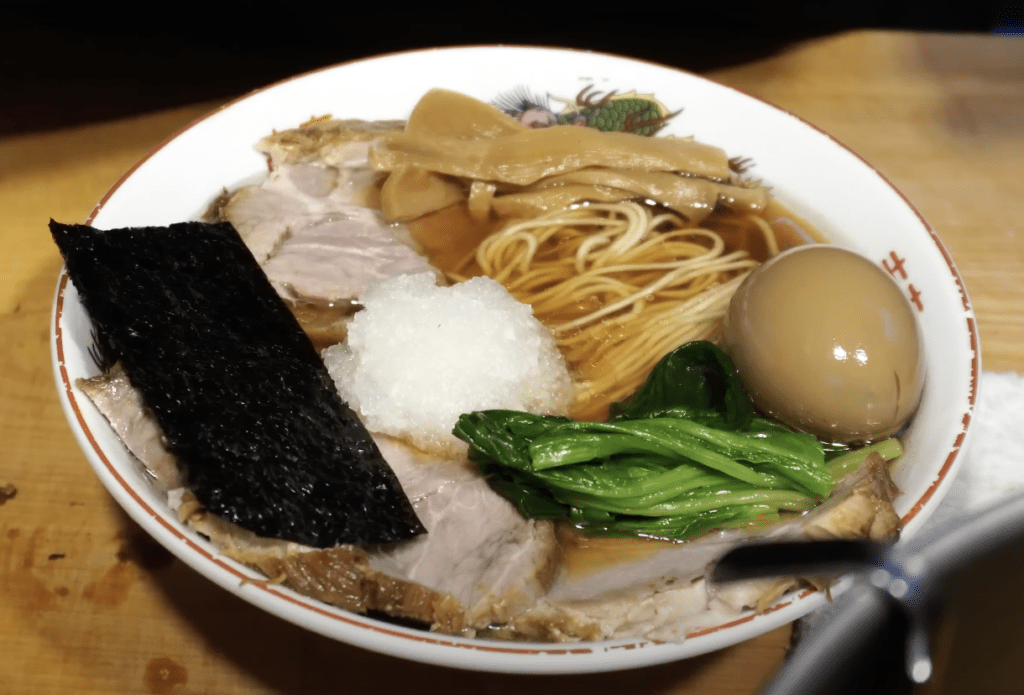
Sourcing and seasonality
Besides the freshness of produce and ingredients, seasonality is strictly followed. Some dishes are not served when the ingredients are out of season. Even if the ingredients can be sourced internationally.
Seasonality means change of dishes to suit the seasons particularly summers and winters is ingrained in the culture. It can be a Udon noodle dish but the bowl for summer and winters may differ in terms of ingredients and preparation.
Back to freshness. Here is an example but not the norm. Selected prized sized blue fin tuna when caught in North America, that single tuna will be helicoptered to the nearest airfield from the dock to be placed on the first flight out to Tokyo. The value one pays for freshness.

Kitchen equipment to knife cutting skills
Peek into the kitchen of a small Japanese diner and the range of equipment are impressive. They seem well fitted with various appliances in a relatively confined space – dough spiral mixers, noddle makers, ice cube machines to the usual range of burners and ovens.
One interesting sound to a new visitor is kitchen timers going off every now and then. These are extensively used to time aspects of food preparation. This together with the use of kitchen scale, it shows how fastidious they are even though they do this routinely. Nothing is left to chance.

This fastidious nature also comes into play in the choice of knives and how cutting and slicing has to be done.
Did you notice when sashimi is prepared, the speed and style of cutting and the way the person stands with that shoulder position is near identical all over the World. The cutting is slow and measured and wonderful to watch.
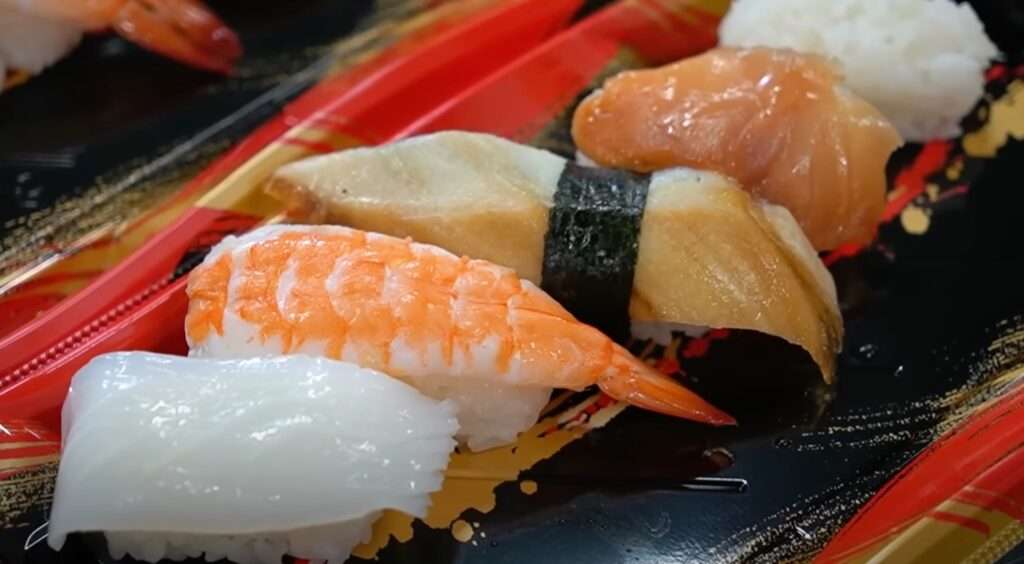
Presentation
Presentation is a core element in Japanese food culture. The colours in a sushi roll, the laying of the noodles in a bowl in a particular way, that sprig of garnish, the separation of food in bowls including sauce and dipping bowls, and the placement of dishes on a tray are not accidental. There is clear order to be observed. All the elements must be present.
No other food culture or cuisine comes close to this form of exquisite presentation. It is art form taken very seriously. On the belief that the visual appearance of a dish is just as important as its taste.
Other cuisines too are cognisant of visual presentation but the Japanese is way up there in this respect.
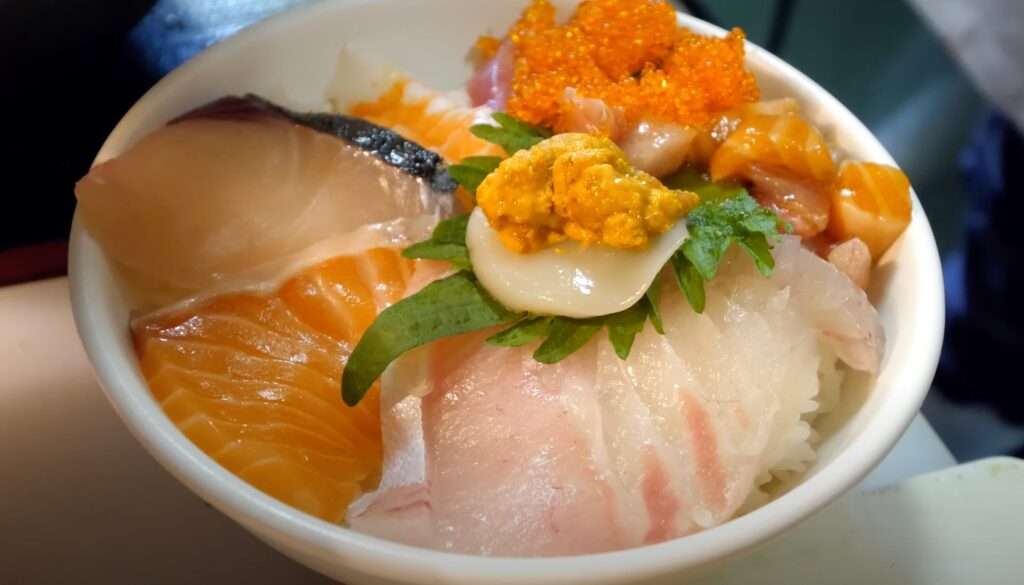
More on presentation – simplicity, colours and texture
One of the key principles of Japanese food presentation is simplicity.
Japanese cuisine emphasises natural flavours and textures, and therefore dishes are often presented in a simple, minimalist style that showcases the ingredients themselves. This is reflected in the use of white porcelain or lacquerware dishes, which provide a clean canvas for the food. The food is also arranged in a way that is visually pleasing but not overly fussy, with a focus on balance and harmony.

Food culture Japan also carefully considers the colours of each ingredient and how they can be arranged to create a visually stunning dish. For example, a traditional Japanese bento box will often include a variety of colorful items such as pickled vegetables, grilled fish or meat, and sushi rolls. The colors of these items are carefully chosen and arranged in a way that is both aesthetically pleasing and balanced.
Texture is also an important consideration in Japanese food presentation. The use of different textures can create a dynamic and interesting dish. For example, a dish may include both crispy and soft elements, such as tempura shrimp and tender sashimi. This creates a contrast in both flavor and texture, making the dish more enjoyable and engaging to eat.
Finally, Japanese food presentation includes decorative elements such as garnishes and edible flowers. For example, a dish of sashimi may be garnished with thinly sliced radish or shiso leaves, which not only look beautiful but also complements the flavour of the fish.
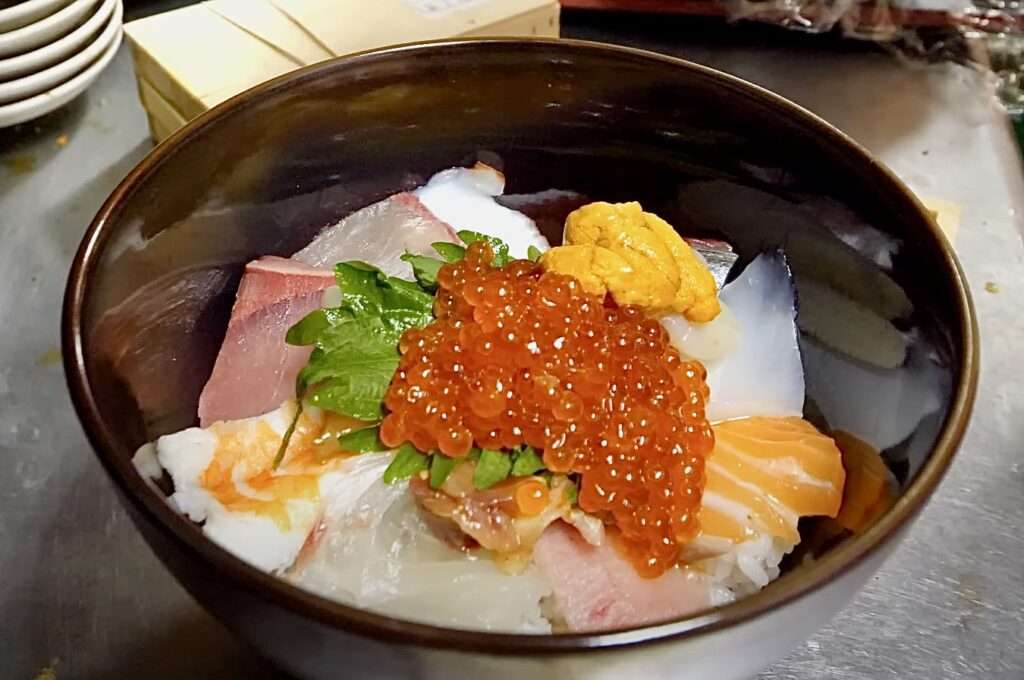
The negative space
You recognise this immediately after you are told about this. The use of negative space. Negative space refers to the empty space on a plate or dish that is intentionally left blank. It also allows the eye to focus on the main elements of the dish, highlighting their beauty and elegance.
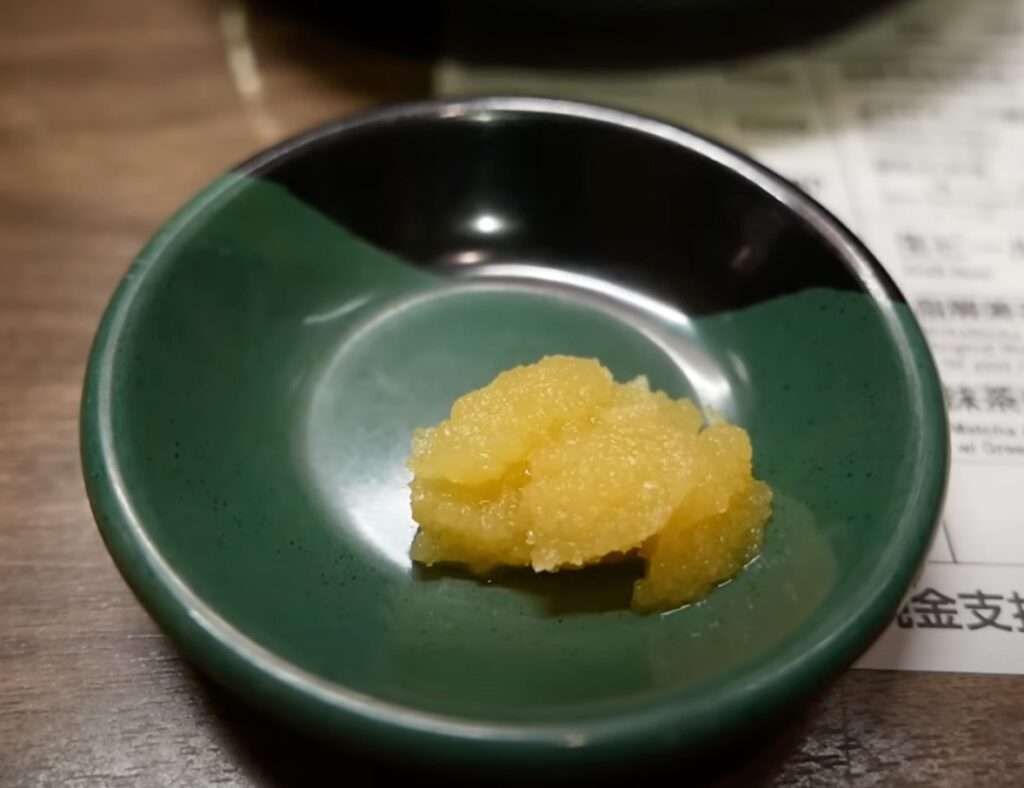
So now you know why that dab of wasabi or radish sits on the side of a larger sauce bowl. And not in the centre. It may explain why you now see western cuisine in high end restaurants served on oversized plates something not practised in the past.
Japanese food presentation in summary is an important aspect of Japanese food culture and reflects the country’s attention to detail and aesthetics.
By following principles of simplicity, colour, texture, negative space, and decorative elements, Japanese chefs create dishes that are not only delicious but also visually stunning. Whether you are enjoying a traditional bento box or a multi-course kaiseki meal, the presentation of Japanese food is sure to impress and delight.
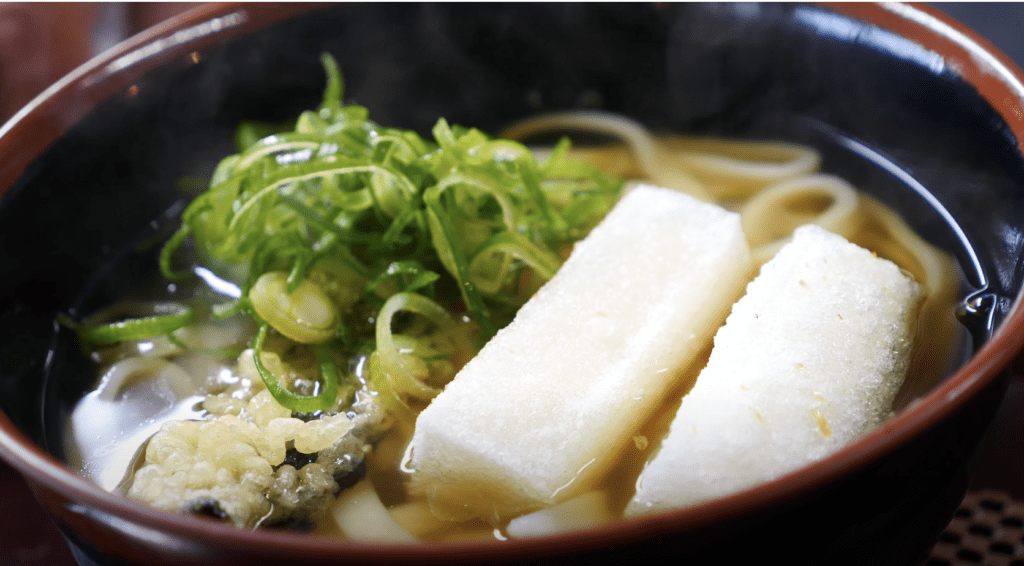
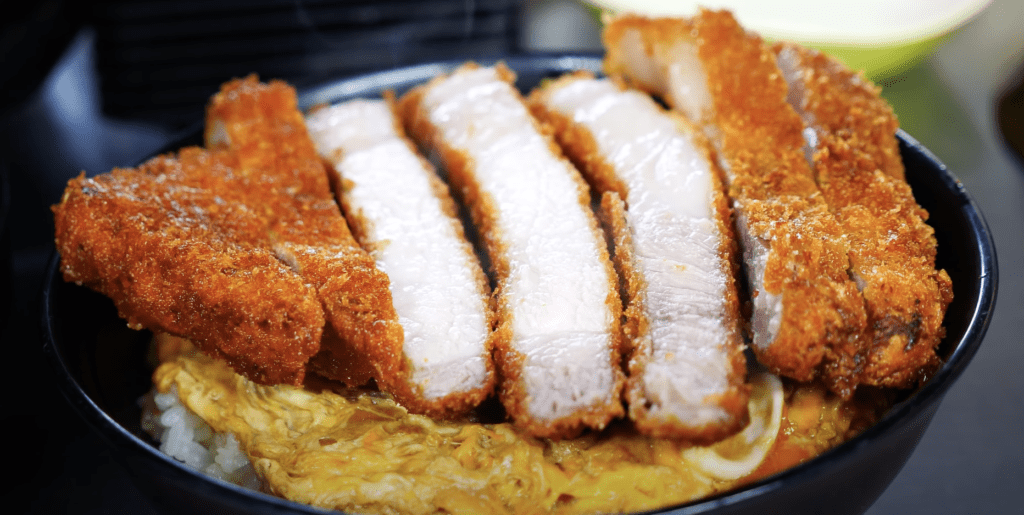
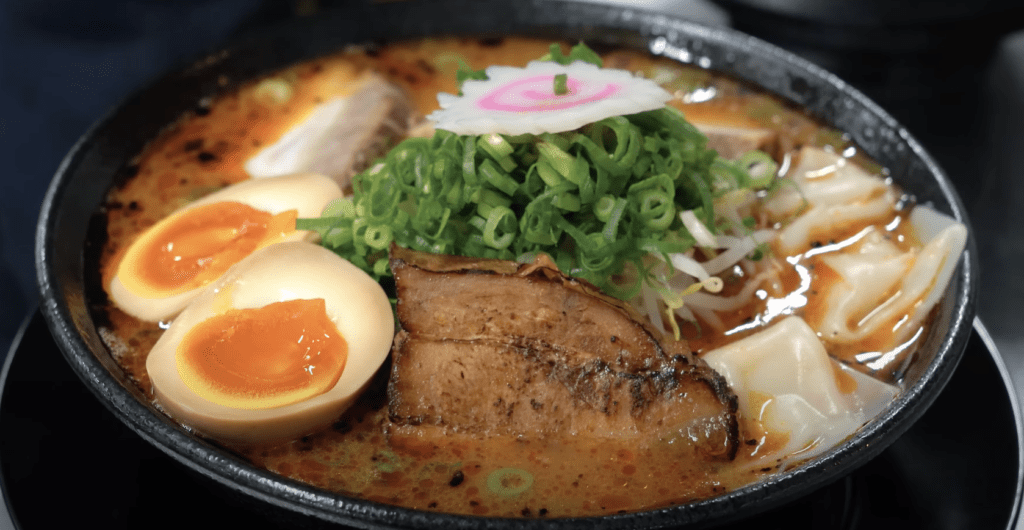
More on their food culture
The Japanese are renown for their efficiency and productivity and the emphasis on automation. Not when it comes to their food. Most prepare their food ingredients each day in-house.This includes making of noodles, stock and the peeling, slicing and dicing of produce and ingredients. There are little in the way of pre-cut, pre-prepared and bagged food ingredients coming from a wholesaler.
There is a clear sense of pride and passion. Head to YouTube to see how Udon and Soba noodles which are the 2 most traditional native noodles types are made in their diners from flour. Notice how iced water is placed next to the pan of boiling hot water to stop the cooking process of noodles so the right texture is achieved.
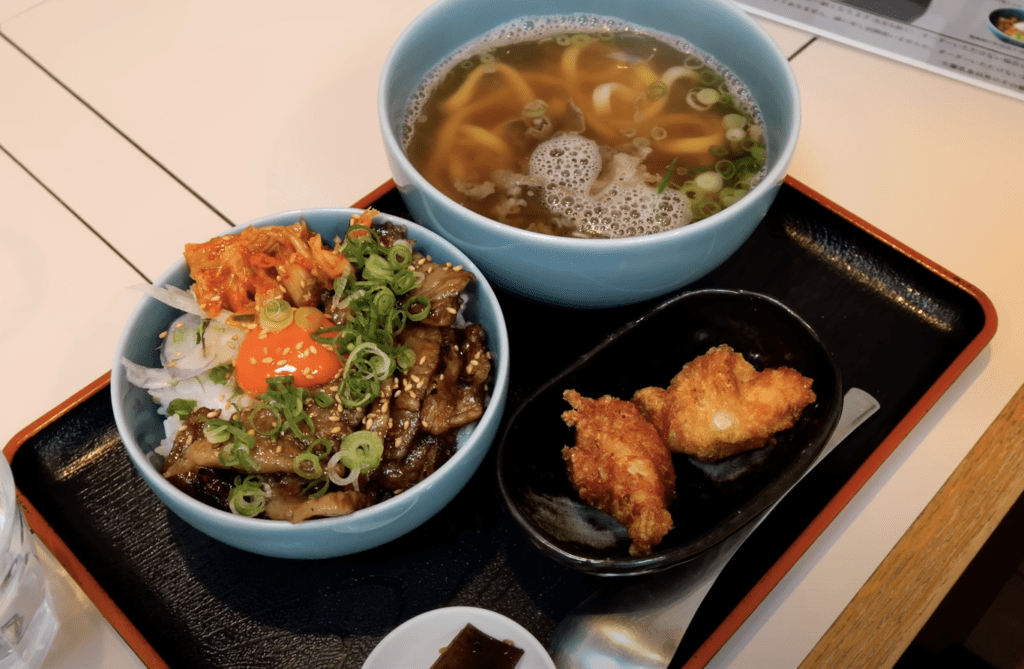
So we are now back to the open kitchen and why. My sense is that it is to show their diners how their food is prepared as well as the environment which are extraordinarily clean and well ordered.
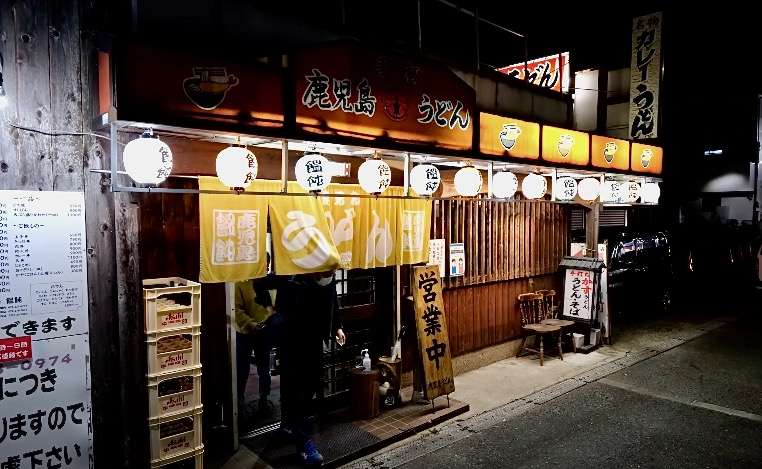
Remember automation. Well automation is not all lost when it comes to Japanese food culture. See the vending machine at the front of diners which is now commonplace. You punch in your order, pay for it and receive a ticket which you hand over to the counter staff. Interestingly you can also custom place orders such as firmness of your noodles, level of spiciness etc.
So the next time you are in Japan head to a diner and watch the show. It will be a show and it is meant to be a show. Go for the Udon or seafood diners which I think are more pronounced as these are steeped in tradition.
